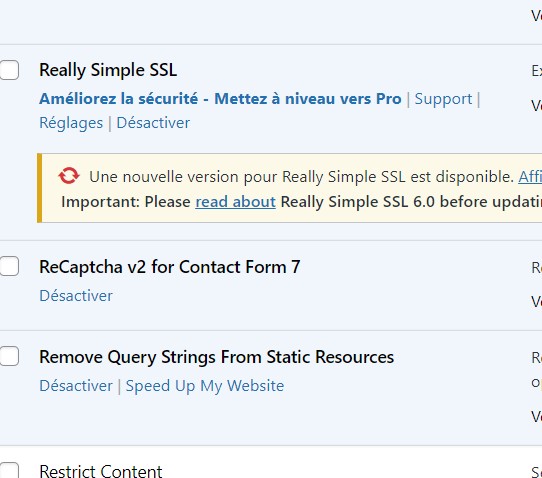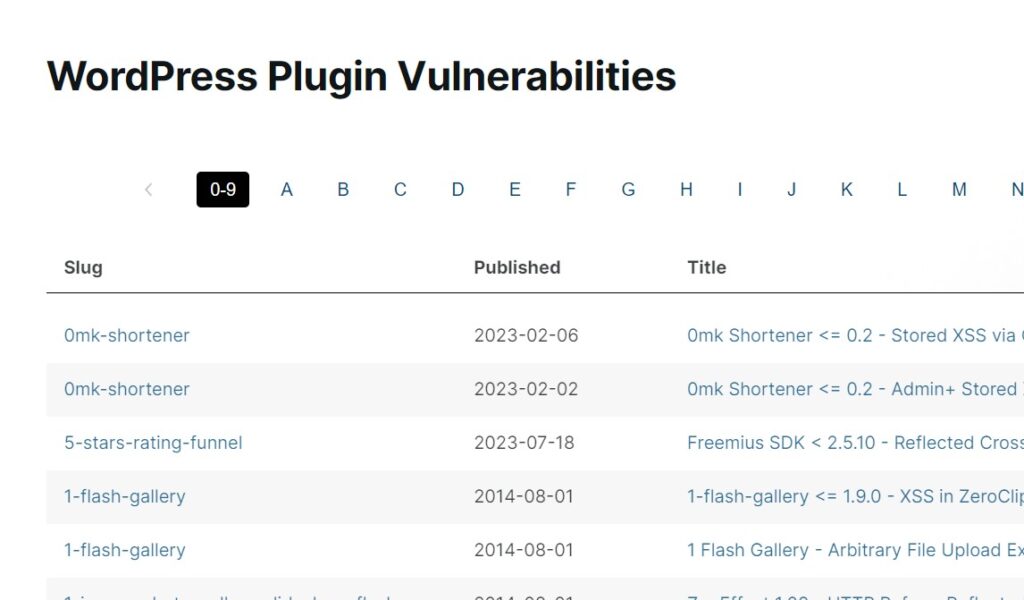Diving deep into WordPress Penetration Testing
Ever wonder if your WordPress site is really safe? Want to make sure your website is as secure as Fort Knox? That’s where WordPress penetration testing comes in! Stick with us and delve into the world of ensuring your website’s security.
Before you dive into this article, here are some key points to know:
- Penetration Testing: WordPress Penetration Testing, often referred to as “pentesting“, is a security measure that tests your website for any vulnerabilities that could potentially be exploited by hackers.
- Tools Used: Familiarize yourself with names like WPScan, Nessus, OpenVAS, Sublist3r, and Kali Linux. These are tools often used in WordPress penetration testing, each with its own features and specialties.
- Legal Aspects: Unauthorized penetration testing can have serious legal consequences.
- Reporting: The final step of a successful penetration test is a detailed report, outlining potential vulnerabilities and providing recommendations to fix them.
What is WordPress penetration testing?
Simply put, WordPress penetration testing, or “pentesting”, is like a health check for your website.
It’s a process where your website is put to the test, seeking out any weaknesses that hackers could exploit.
From dodgy website design, outdated plugins or themes, non-secure networks and overly complex websites – all these and more can make your site an easy target for malicious attacks.
Also read : React JS: understand its magic and make it work for you

WordPress penetration testing helps you to recognize these vulnerabilities, allowing you to boost your site’s security before the hackers get a chance to strike!
What is WordPress penetration test used for?
Think of pentesting as the hero in a spy movie, scanning for all possible threats. It’s used to
- Spot vulnerabilities early: Penetration testing allows you to proactively identify and fix any potential issues that could arise from plugin updates, new theme installations, or other elements that might be added to your site.
- Keep costly downtimes at bay: Hacking can not only disrupt your website’s service but also lead to the cost and labor of fixing and restoring your site. With penetration testing, you can nip vulnerabilities in the bud before they turn into full-blown issues.
- Avoid regulatory penalties and reputation damage: Protecting your client’s data is paramount! If you don’t comply with data security regulations, it could lead to penalties and even damage your business reputation. Penetration testing helps ensure the safety net of client information.
- Essential for critical sites: If you are running a personal blog, an attack might not be a serious concern. However, for ecommerce or business-critical sites, security should be a top-notch priority. And that’s where penetration testing comes into play!
3 Things to consider before leading a penetration test
- Make sure you have permission: Always remember to get authorization from the site or system owner before conducting a pentest.
- No misuse: Misusing techniques or tools for any malicious purpose can lead to legal consequences.
- Test in a development environment: When testing websites, it’s recommended to carry out the test on a copy of the live site in a local development environment. This way, your live site remains unaffected and safe!
How to do a WordPress penetration test?
Now let’s get down to business! How exactly do you conduct a WordPress penetration test? Sit tight as we give you a step-by-step roadmap:
Ready? Let’s get started!
1. Preparation
- 1.1 Get Permission: Always request permission from the website owner before initiating any penetration tests. Unauthorized tests are not just unethical, they’re also illegal.
- 1.2 Create a Clone: Clone your WordPress site on a separate server or local machine. This way, you can conduct penetration testing without affecting your live site.
2. Collecting Information
- 2.1 Domain Info: Use tools like whois, nslookup, and dig to gather info about the domain, IP addresses, DNS records, etc.
- 2.2 Identify Subdomains: Use tools such as Sublist3r, Amass, or Subfinder to identify subdomains.
- 2.3 Technical Bits: List out the technical details of your website including WordPress version, installed themes, and plugins.
3. Analyzing Vulnerabilities
- 3.1 Automated Scanners: Employ automated vulnerability scanners like WPScan, Nessus, or OpenVAS to detect common WordPress vulnerabilities. These can spot outdated software versions, known vulnerabilities in plugins and themes, and other security loopholes.
- 3.2 Manual Testing: Manually inspect the website for common security configuration errors and weaknesses like weak passwords or exposure of sensitive information.
4. Security Analysis
- 4.1 Permissions: Check for unsecured permissions on files and directories.
- 4.2 User Input Fields: Test user input fields for SQL Injection, Cross-Site Scripting (XSS), and Cross-Site Request Forgery (CSRF) vulnerabilities.
- 4.3 Admin Dashboard: Scan the WordPress admin dashboard to identify weak user roles and privileges.
5. Brute Force Attacks and Password Cracking
Conduct a brute force attack on the WordPress login page to test users’ password strength. Tools like Hydra or Wfuzz can automate this process.
6. Security Headers and SSL/TLS
- 6.1 Security Headers: Ensure the website has appropriate security headers like X-XSS-Protection, X-Content-Type-Options, and others.
- 6.2 HTTPS and SSL/TLS: Make sure the website enforces HTTPS and has a valid SSL/TLS certificate.
7. Themes and Plugins Analysis
- 7.1 Code Review: Review the code of installed themes and plugins for potential security vulnerabilities.
- 7.2 Vulnerability Check: Check for known vulnerabilities associated with the used themes and plugins.
8. Database Security
Ensure the database is secure and not vulnerable to SQL injection attacks.
Limit database access only to necessary users.
9. File Downloads
Test file download functionality to ensure it doesn’t allow malicious files to be uploaded to the server.
10. Authentication and Authorization
Look out for issues with user authentication and authorization mechanisms. Test for privilege escalation vulnerabilities.
11. Reporting
- 11.1. Document all potential weaknesses and vulnerabilities uncovered during the penetration test.
- 11.2. Provide clear and detailed recommendations to resolve these vulnerabilities.
12. Installing Kali Linux on VirtualBox
- 12.1 Download and Install: Download and install VirtualBox on your host computer, then download the 64-bit version of Kali Linux.
- 12.2 Create Virtual Machine: Create a new VirtualBox virtual machine with Debian 64-bit as its operating system, allocating at least 10GB of disk space to avoid running out of space later.
- 12.3 Install Kali Linux: Start the new virtual machine and select the ‘Install Kali Linux’ option.
- 12.4 Start Virtual Machine: Open VirtualBox where the Kali Linux virtual machine will be visible and start it up.
5 WordPress penetration testing tools
Now that you know how to conduct a WordPress penetration test, let’s equip you with some top-notch tools to make your job easier:
1. WPScan
A favorite among the WordPress community, WPScan is specifically designed for detecting vulnerabilities in WordPress sites. It’s great at uncovering problematic plugins, weak passwords, and any security mishaps in your WordPress core.

2. Nessus
When it comes to vulnerability scanning, Nessus is a heavyweight champion. This robust tool can identify vulnerabilities in your website’s firewall, detect any insecure configurations, and even spot malware!
3. OpenVAS
Who wouldn’t love an open-source tool with a truckload of features? Meet OpenVAS, a comprehensive vulnerability scanner that can help you detect security loopholes from outdated software versions to misconfigurations and many more.
4. Sublist3r
Sublist3r is all about gathering information! It’s an excellent tool for enumerating subdomains related to your website and gathering data about it. Its integration with other tools makes it even more valuable for your penetration testing toolkit.
5. Kali Linux
Last but not least, Kali Linux! It’s not just a tool, it’s a complete pentesting ecosystem packed with hundreds of tools to help you in your quest for WordPress security.
It’s an ideal environment for carrying out tasks such as traffic analysis, password cracking, and vulnerability scanning.
WordPress penetration testing: let’s sum up
We’ve covered quite a lot of ground, haven’t we? Let’s summarize the key points to keep in mind:
- Penetration testing is essential to detect vulnerabilities in your WordPress site before they’re exploited. It works like a health check-up for your site, helping you keep the hackers at bay!
- Always obtain necessary permissions before initiating any tests.
- Ensure to carry out tests in a cloned environment to safeguard your live site.
- Using tools like WPScan, Nessus, OpenVAS, Sublist3r, and Kali Linux make the testing process easier and more efficient.
- Don’t forget to document all potential vulnerabilities found during the test and provide clear steps to resolve these issues.
Now that you’re equipped with the knowledge of WordPress penetration testing, it’s time to beef up your site security!
Remember, maintaining your WordPress site’s security isn’t a one-off task, it’s an ongoing commitment. With regular penetration testing, you can stay one step ahead of the hackers and ensure your site remains safe and secure.